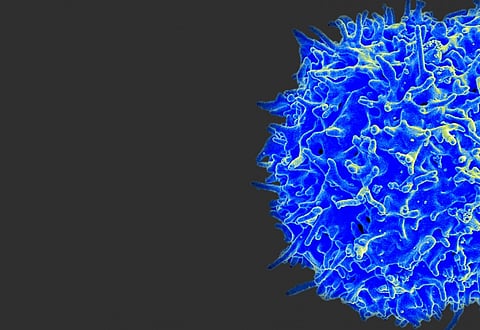

With statistics showing 17 million cases of cancer last year, the disease has become a worldwide issue. According to UK Cancer Research Magazine's study, there is a possibility that 27.5 million new cases will emerge out every year by 2040. Amid this, thanks to scientific breakthroughs and AI technologies, cancer is more likely to be detected at a much earlier stage than before.
Ryan Schoenfeld, vice president of scientific research at the Mark Foundation for Cancer Research, a New York City-based philanthropy said – "AI is never going to fully replace physicians, but researchers have made impressive strides in developing AI that specializes in particular tasks, like reading images from CT scans or pathology slides. I expect we will continue to see further advances in this area."
So yes! The next step of AI advancement is here to fight cancer. The scientists are using AI algorithms to map 10 billion cells from the human body in an effort to discover how life emerges from the embryo, or how diseases like cancer manifest.
According to Dana Pe'er, the current chair, and professor in computational and systems biology at the Memorial Sloan Kettering Cancer Center, ML can be utilized as a toolbox for building the Human Cell Atlas. In order to do this, data is turned from billions of tissue sample cells into 3D maps which helps scientists visualize human bodies down at the granular level.
Through this 3D mapping of cells, scientists have managed to trace the source of acute lymphoblastic leukemia. It is the most common cancer in children and to a rare cell type that only emerges in 7 out of 10,000 cells. According to Pe'er, data visualization has also allowed researchers to discover how a single mutation in a pancreatic cell that can lead to cancer.
This mutation ruse the immune system of the human body and it can no longer defend against cancer. The information received from this data visualization technique can help scientists develop new drugs and methods to curb diseases like cancer. It will also help them speed up clinical trials.
According to Pe'er, the development of the Human Cell Atlas will serve as a healthy reference for mapping disease. She considered it as a 'candy land playground' for biologists.
However, the techniques facilitated by ML algorithms are rather successful in modeling common patterns in data, than revealing any anomalous behaviors.
The scientists working on this technique, believe that outlier is often crucial and their goal is not to predict but understand the biological issues through technology.
To recall, AI developed at the Cleveland Clinic employs ML to combine medical scans and electronic health records (EHR) that help generate personalized radiation therapy doses for cancer patients. Through the use of patient's medical imaging data and clinical risk factors, the AI model develops a unique radiation dose for each patient which can help minimize negative side effects for patients and reduce treatment failures to less than 5 percent.
As we can see the medical science innovations are hustling at various levels to fight cancer which was mysterious disease decades ago. The experts all across the world believe that disruptive technologies, contemporary to AI, will continue to bring revolutionary solutions, to various diseases, that are more likely to increase the life expectancy of the population.
Join our WhatsApp Channel to get the latest news, exclusives and videos on WhatsApp
_____________
Disclaimer: Analytics Insight does not provide financial advice or guidance on cryptocurrencies and stocks. Also note that the cryptocurrencies mentioned/listed on the website could potentially be scams, i.e. designed to induce you to invest financial resources that may be lost forever and not be recoverable once investments are made. This article is provided for informational purposes and does not constitute investment advice. You are responsible for conducting your own research (DYOR) before making any investments. Read more about the financial risks involved here.
